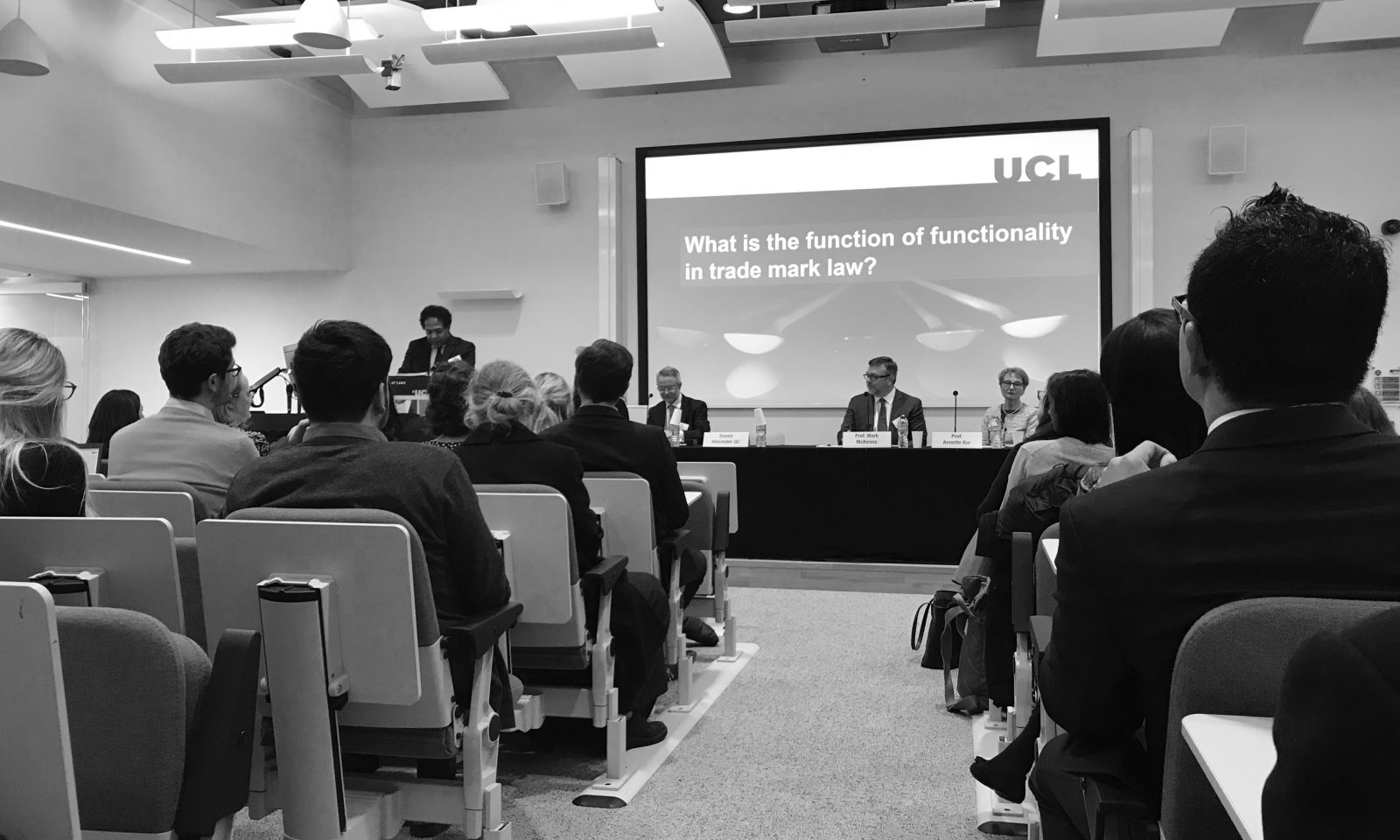What is the function of functionality?
Yesterday, University College of London (UCL) hosted a seminar on the doctrine of functionality. Experts from different sectors and jurisdictions discussed one of the most debated absolute grounds for refusal of registration of a trade mark, namely that the sign consists exclusively of (i) the shape, or another characteristic, which results from the nature of the goods themselves; (ii) the shape, or another characteristic, of goods which is necessary to obtain a technical result; or (iii) the shape, or another characteristic, which gives substantial value to the goods (Art. 7(1)(e) of the EUTMR and Art. 4(1)(e) of the Trade Marks Directive). Tilen Zonta, Intellectual Property Institute’s associate who is currently studying intellectual property law at Queen Mary University of London, was present at the seminar.
As explained by Annette Kur from Max Planck Institute for Intellectual Property and Competition Law, the aim of the provision, as explained by the Court of Justice of the EU (CJEU) is to prevent monopolies (Lego Juris case, in which registration of the Lego brick as a trade mark was denied) and enabling a certain freedom of choice (Philips v. Remington, which concerned the registration of the Philips electric shaver in the form of a triangle). In the Hauck v. Stokke case (attempt to register the children chair Tripp Trapp) the CJEU explained that the exclusion cannot be limited to pure design product, otherwise the goal of preventing monopolies could not be met. There are also other, more objective factors, such as the price that the consumers consider. AG in this case said that essential characteristics reflecting the shape of the goods cannot be monopolised.
Allan James from the UK Intellectual Property Office (UK IPO) illustrated how the doctrine of functionality is used in practice. Usually, the sign is simply visually examined, whereas in difficult cases, the consumption surveys or expert evidence (important but rarely determinative) can be considered. An important question is also the cumulation of different absolute grounds for refusal based on the functionality. In Nestlé v. Cadbury (attempt to register the shape of the Kit Kat chocolate bar) the UK IPO considered the combination of different criteria, including the process of manufacture of the bar. The CJEU said that different grounds may overlap, but they cannot make a composite objection.
Mark McKenna, professor at the Notre Dames Law School in Indiana, presented the development of the functionality doctrine in the American case law. In accordance with the intellectual property law in the US, the designs are protected as “utility patents” or “design patents”. For a long time, the courts have been questioning whether it is necessary to provide protection for unpatented designs through trade mark law. The key issue is the collision between the right to copy and the need of others to copy the shape or another characteristic. In the Kellogg v. National Biscuit, for instance, the form of the shredded wheat was an implication of the production process so that the shape could not be registered. In the Qualitex decision the US Supreme Court defined functionality as essential to the use or purpose of the article or affecting the cost or quality of the article.
Lastly, prof. Saeema Ahmed-Kristensen from the Royal College of Art (RCA) explained how the legal concept of functionality does not necessarily coincide with the designers’ concept. -When they talk about functionality they mean mainly technical functionality, whereas aesthetic functionality for them is “value”. Design by definition represents one of the different possibilities they have to shape a product.
The panelist Daniel Alexander QC concluded the debate by saying that it is not easy to draw a line between protectable subject matter and what shouldn’t be protected. The courts must weigh the interests of different stakeholders and come to a reasonable solution.
You can watch the seminar here.
The 4th Open Knowledge Day took place on Tuesday 17 October 2023, with an accompanying workshop on 18 October 2023. This year it was organised by the Open Data and Intellectual Property Institute (ODIPI) and supported by Knowledge Rights 21 (KR21).
We invite you to the fourth Open Knowledge Day and the workshop, which will take place this year within the framework of the programme and with the support of Knowledge Rights 21. The event will bring together experts from different European countries to discuss two topics: the first part will deal with the legal basis for data analytics, which is a key part of machine learning and related artificial intelligence, and the general exception for research. In the second part, open science in theory and practice will be presented both in Slovenia and in some Western Balkan countries. Representatives of research and educational institutions from Slovenia and the Western Balkan countries, as well as interested members of the public, are invited to attend.
Dr. Maja Bogataj Jančič, a renowned expert in copyright law, has joined the Berkman Klein Center for Internet & Society at Harvard University, where she will serve as an affiliate researcher for the next two years.
On Friday, October 6, 2023, the online seminar “Practical Experiences in Resolving Copyrights of Modern Book Works” took place. The seminar addressed relevant questions concerning user access to literary works in digital form.





